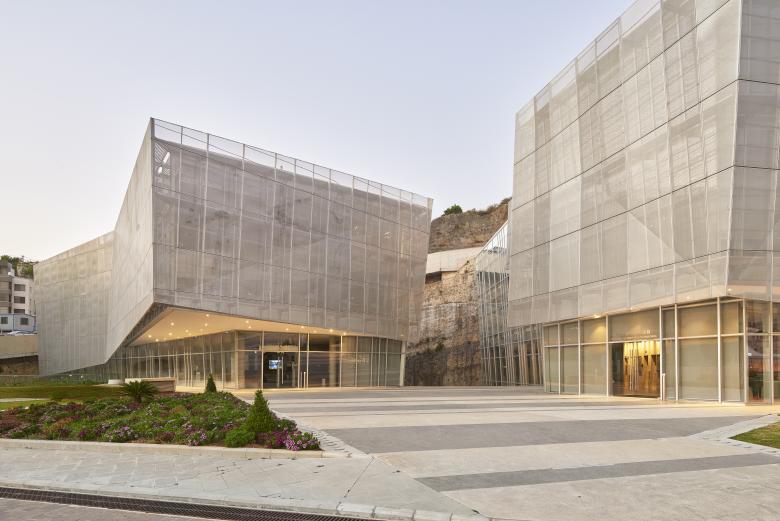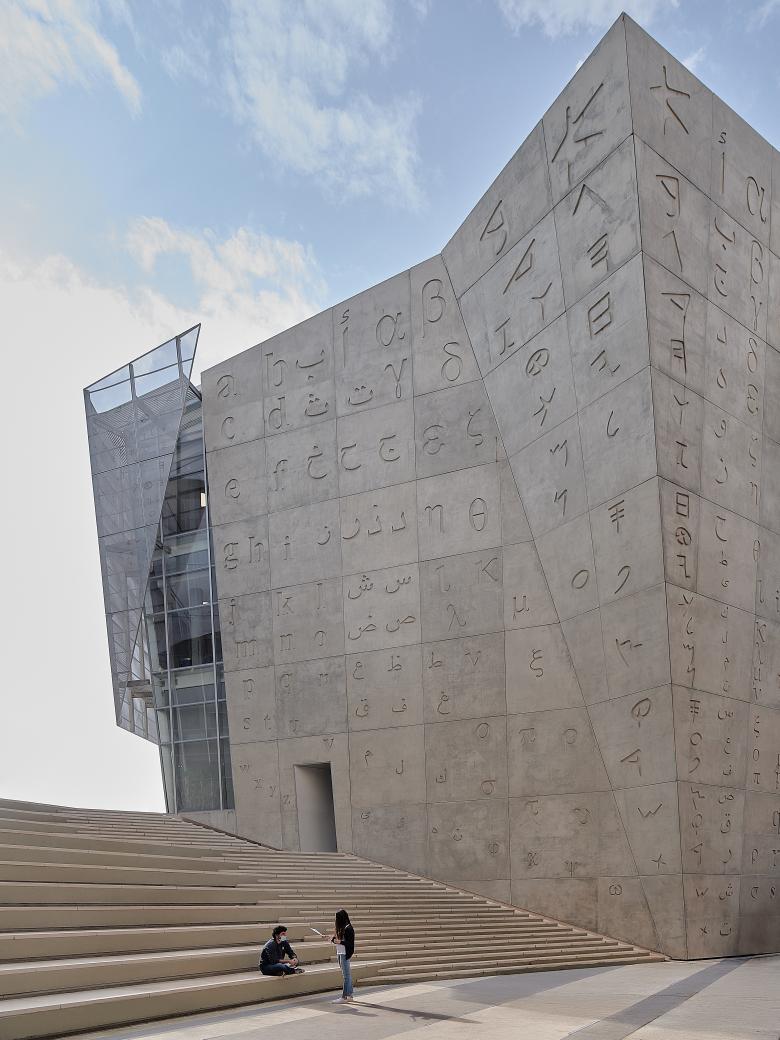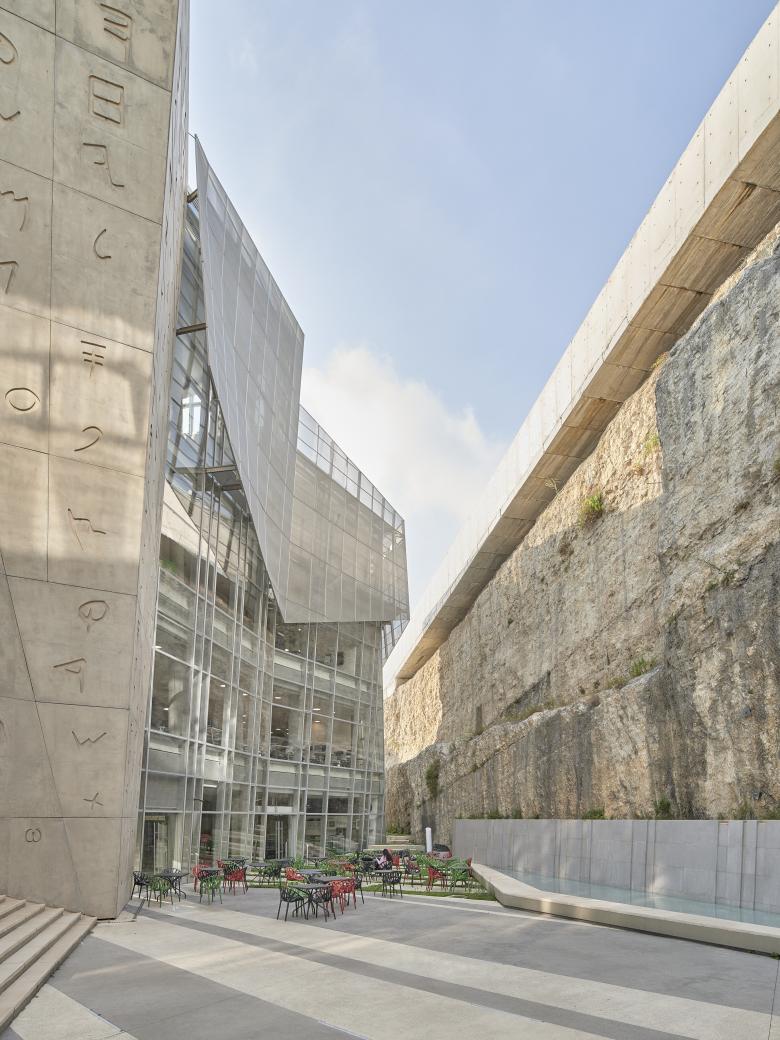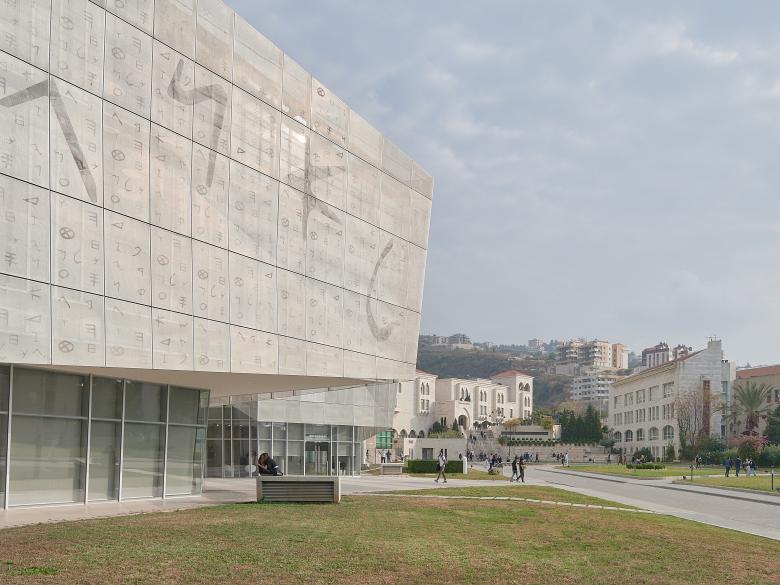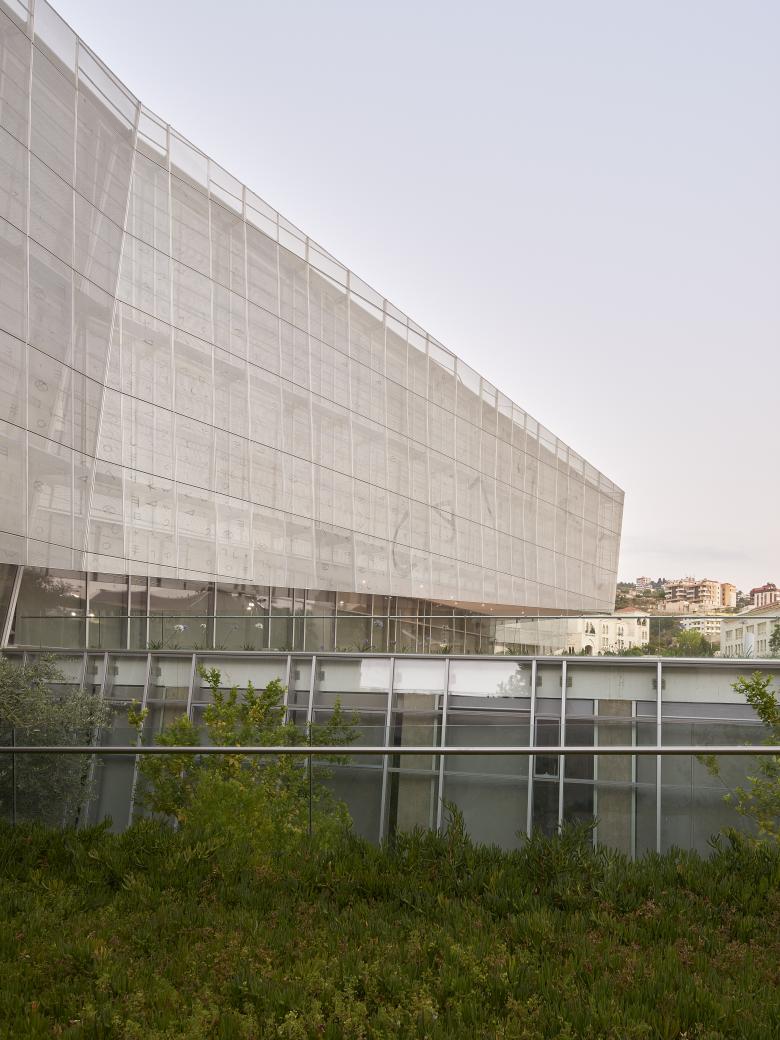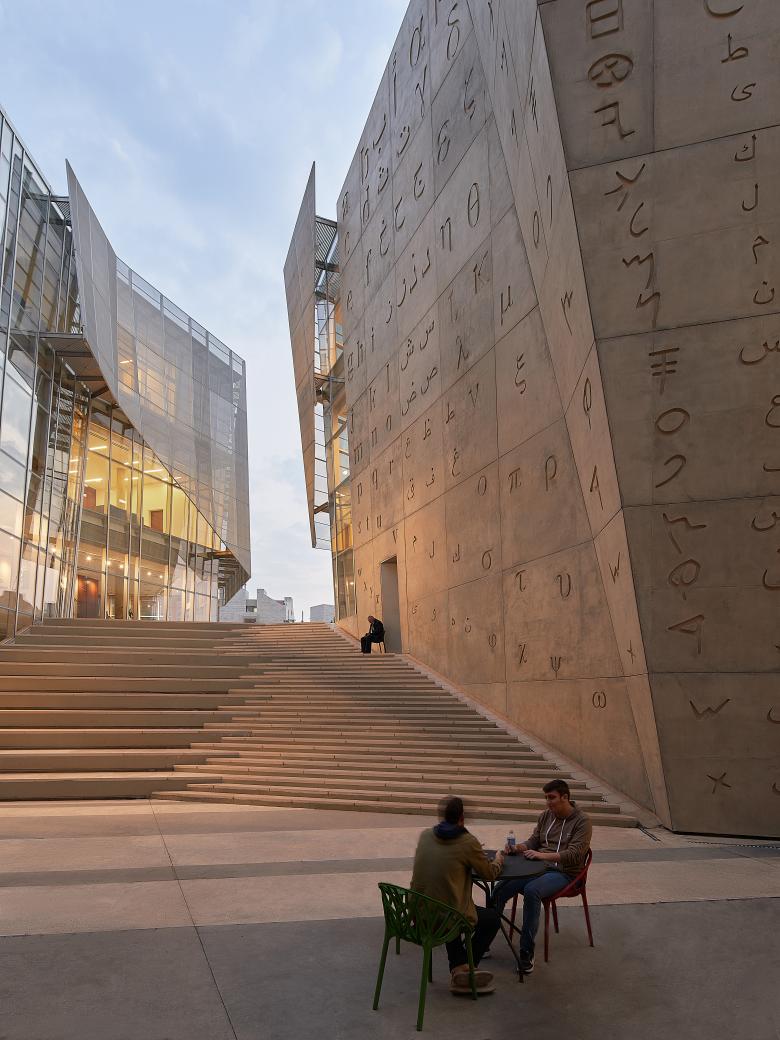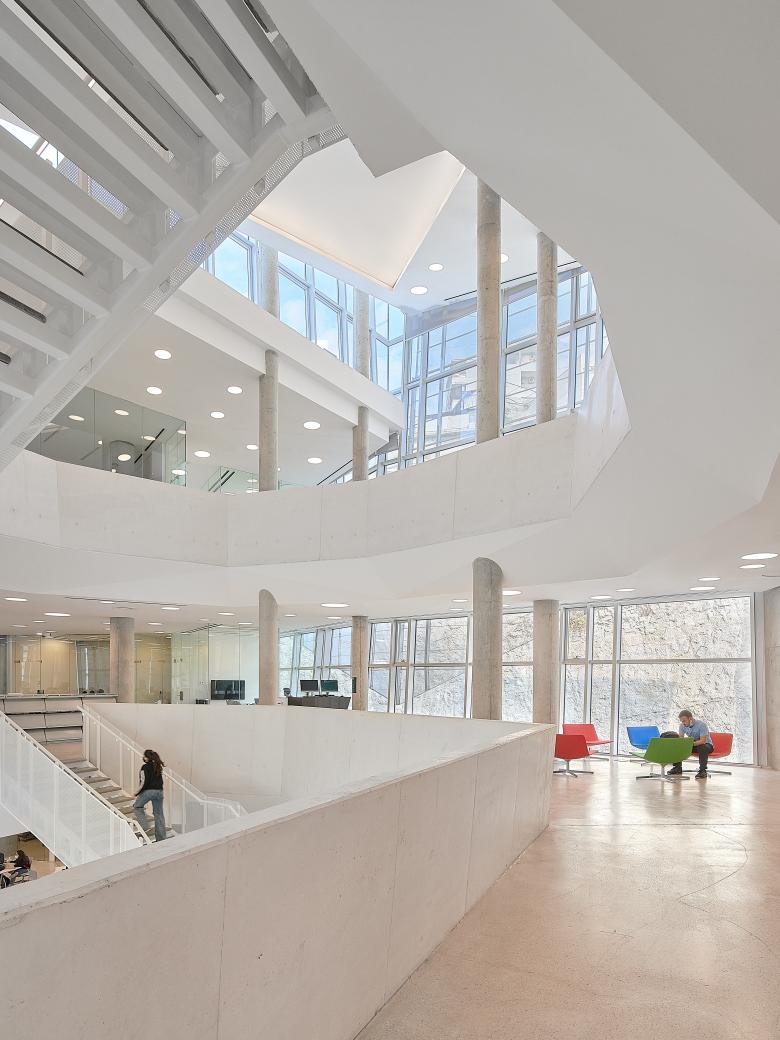J. Jabbra Library and R. Nassar Central Administration
Jbeil, Lebanon
- Architetti
- Atelier Pagnamenta Torriani
- Anno
- 2020
The city of Jbeil (Byblos), believed to be one of the oldest continuously inhabited cities in the world, is a UNESCO World heritage Site. Jbeil or Byblos is where the first phonetic alphabet was codified by the Phoenicians and "bùblos" was the word used for papyrus by the Greeks.
The Lebanese American University commissioned Atelier Pagnamenta Torriani to design a new library and central administration building on its Byblos Campus. The excavated rock and mountain above were the first impressions while visiting the Byblos Campus site. The exposed sedimentary rock and the complex, stratified history of the region became the inspiration for our design. Both the library and the administration buildings are placed adjacent to the excavated rock, forming an open amphitheater with the rock as a backdrop, juxtaposing the natural with the man-made.
The new structures are conceived as dynamic forms and their exterior skins are layered, providing shade and optimizing diffused light inside according to the orientation. The interior spaces of the library are developed around a large atrium that acts like a hub, brings great luminosity, and allows for natural air circulation. In our design, the exterior spaces flow seamlessly inside, creating connectivity between the two. The interior spaces are fluid, open, and transparent.
Throughout the project, the contrast between solid and transparent is apparent. During the day, the building facades are opaque and become more transparent in the evening. Above the amphitheater, a concrete wall displays the carvings of the four alphabets historically used throughout the immediate region.
Passive features inspired by the local typology are incorporated into the design: the double outer skin allows for shading, ventilation, and light diffusion, and the main open atrium acts like a chimney vent; detaching the buildings from the rock allows the sea breeze to circulate and ventilate the outdoor amphitheater and café areas.
The library and ancillary spaces create synergy among scholarly activities and social life while providing common ground for diverse student activities and forms of information: an inclusive space for exchange, communication, learning, and understanding.
Atelier Pagnamenta Torriani (APT) is the Design Architect for the project, Rafik El-Khoury & Partners are the Engineers/Architects of Record and local craftsmen were involved in the realization of the project.
Publications; Exhibits
2024 AD Middle East
2024 Domus
2024 Pendulum
2024 Divisare
2024 Designboom
2023 Venice Architecture Biennale: "Time Space Existence" International Exhibit
2020 International Panorama, Vol 1, Art & Architecture Editions
2020 The PLAN Magazine, “Lebanese Culture the Focus of the New Byblos University Library and Central Administration”
2013 AIANY, “New World Group Exhibit”
2012 AIANY, “CHANGE: Group Exhibit”
Progetti collegati
Rivista
-
Winners of 2024 EU Mies Awards Announced
1 day ago
-
WENG’s Factory / Co-Working Space
5 days ago
-
Reusing the Olympic Roof
1 week ago
